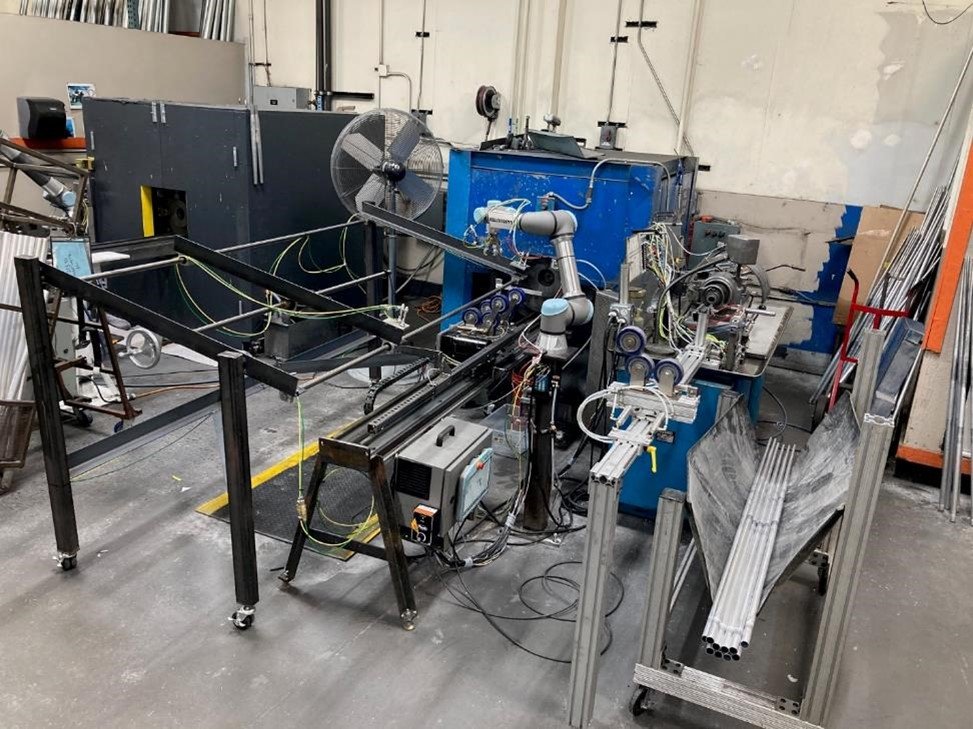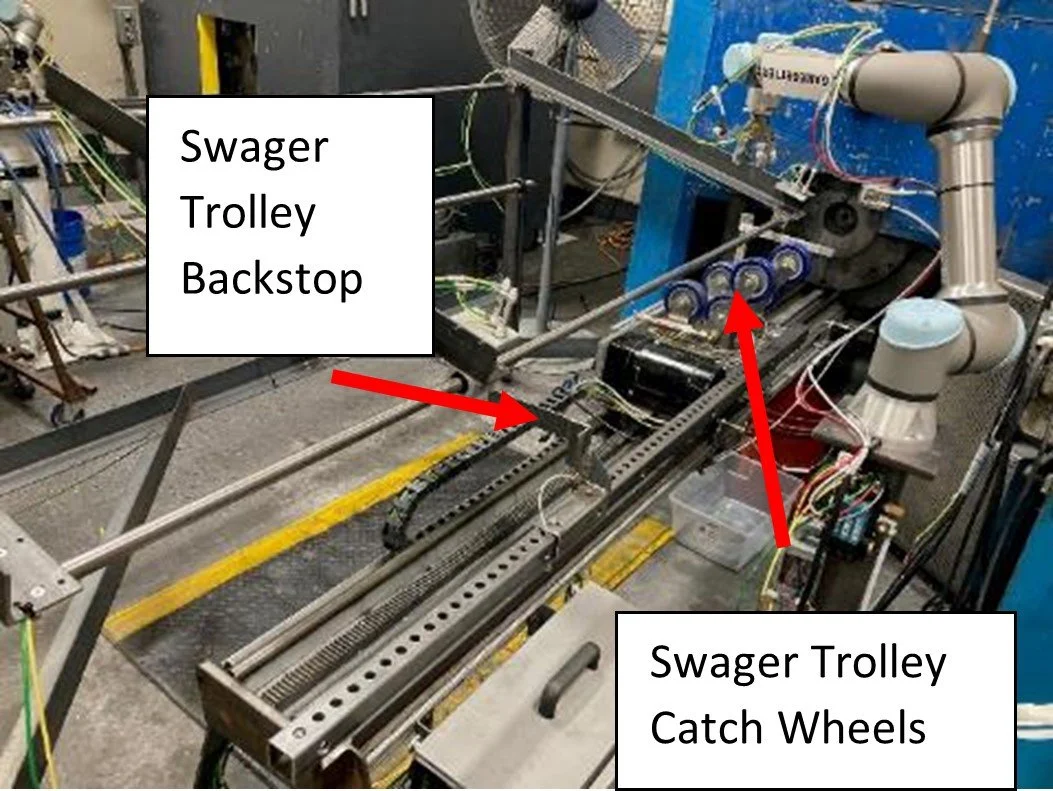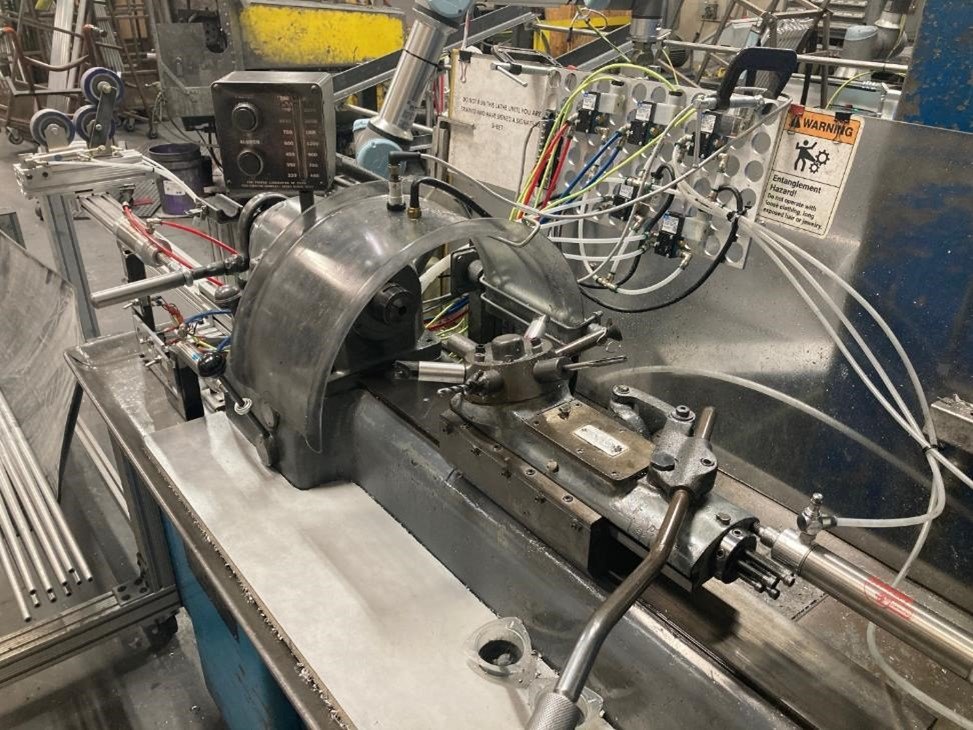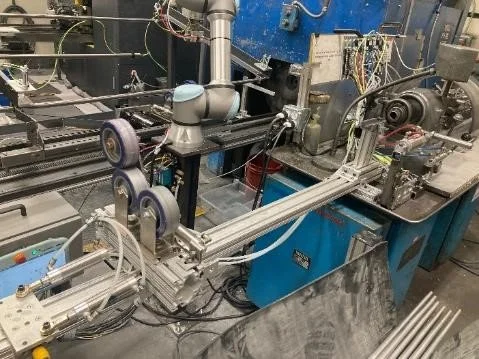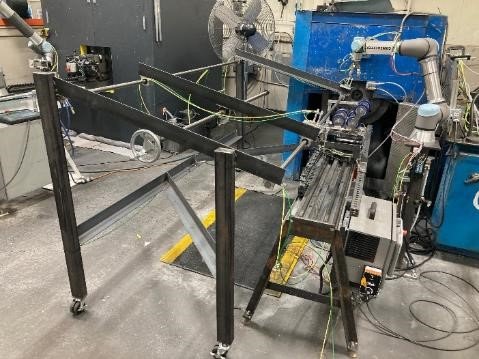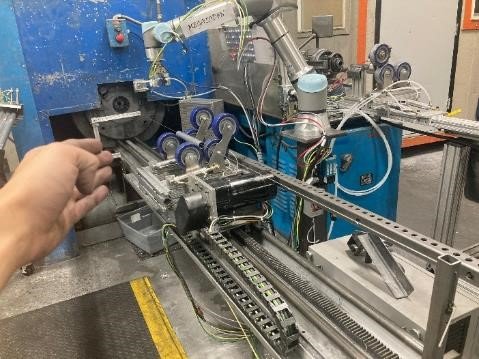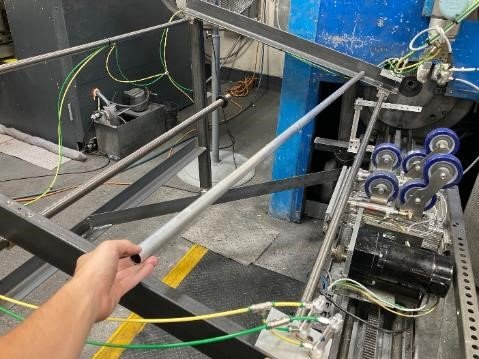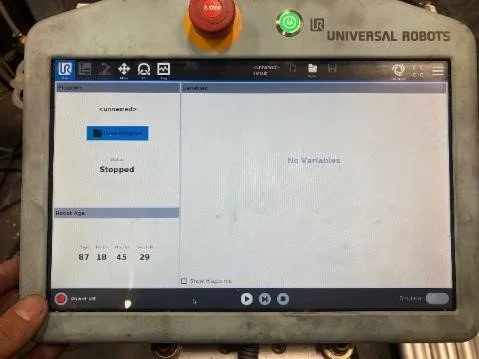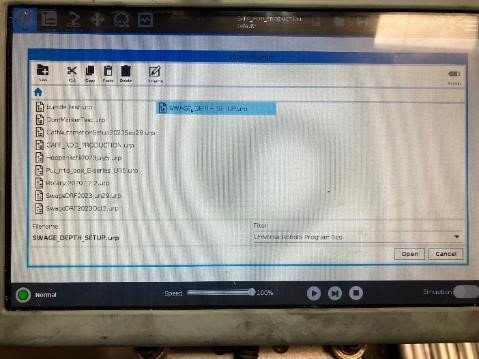Automated Fishing Gaff Rod Production
The manufacturing industry is undergoing a transformation, driven by the integration of advanced robotics. Among these innovations, collaborative robots, or "cobots," stand out as a game-changing technology. Unlike traditional industrial robots, which often require safety cages and dedicated operators, cobots are designed to work alongside humans, enhancing efficiency, safety, and flexibility on the production floor. One of the most popular examples of this technology is the Universal Robots UR5e. Let’s explore how manufacturing robots like the UR5e are revolutionizing production processes across various industries.
What Are Manufacturing Cobots?
Manufacturing cobots are robots designed to assist human workers in a shared workspace. Unlike their larger, more isolated counterparts, cobots are typically smaller, more flexible, and equipped with advanced sensors that allow them to safely interact with humans. These features make cobots ideal for tasks that require precision, consistency, and repetitive motion, as well as those that benefit from human-robot collaboration.
The Universal Robots UR5e is a prime example of a modern cobot. This six-axis robot arm is known for its versatility, ease of use, and adaptability. It can be programmed to perform a wide range of tasks, from assembly and packaging to machine tending and quality inspection.
Key Features of the Universal Robots UR5e
Flexibility and Adaptability: The UR5e is designed to be easily reprogrammed and repurposed for different tasks. This flexibility makes it ideal for small- to medium-sized enterprises (SMEs) that require adaptable automation solutions.
Ease of Use: One of the standout features of the UR5e is its user-friendly interface. Even operators with little to no programming experience can quickly learn how to set up and operate the robot. The intuitive teach pendant allows users to guide the robot arm through a task manually, which the robot then replicates.
Safety: The UR5e is equipped with advanced safety features, including force sensing, which allows it to detect and react to contact with a human or object. This ensures that the robot can operate safely alongside human workers without the need for safety cages.
Precision and Repeatability: With a repeatability of ±0.03 mm, the UR5e is capable of performing tasks that require a high degree of precision. This makes it suitable for applications such as electronics assembly, quality control, and other processes where accuracy is critical.
Payload and Reach: The UR5e has a payload capacity of 5 kg (11 lbs) and a reach of 850 mm (33.5 inches). This makes it well-suited for a wide range of tasks, from light assembly work to more complex operations involving multiple steps.
Applications of Manufacturing Cobots
Manufacturing cobots like the UR5e are being used across various industries to streamline production processes, improve efficiency, and enhance product quality. Some common applications include:
Assembly: Cobots can perform repetitive assembly tasks with high precision, reducing the likelihood of errors and improving overall efficiency. In automotive and electronics manufacturing, cobots are often used to assemble small components or subassemblies.
Packaging and Palletizing: Cobots are ideal for packaging products and stacking them on pallets. Their ability to work continuously without fatigue ensures consistent output, and their adaptability allows them to handle a variety of products and packaging configurations.
Machine Tending: Cobots can be integrated with CNC machines, injection molding machines, and other industrial equipment to load and unload parts, reducing the need for manual labor and minimizing machine downtime.
Quality Inspection: With their high precision and repeatability, cobots are well-suited for performing quality inspections. They can be equipped with cameras, sensors, and other inspection tools to detect defects, measure dimensions, and ensure product quality.
Material Handling: Cobots can efficiently handle materials, moving them from one station to another, sorting items, or feeding products into machines. This reduces manual labor and increases the speed of production lines.
Welding and Soldering: In industries such as metal fabrication and electronics, cobots are used for welding and soldering tasks. Their precision ensures consistent welds and solder joints, improving the overall quality of the finished product.
Benefits of Using Cobots in Manufacturing
The adoption of cobots in manufacturing offers several significant advantages:
Increased Efficiency: Cobots can perform tasks faster and more accurately than humans, leading to higher productivity and reduced cycle times.
Enhanced Safety: By taking over dangerous or repetitive tasks, cobots reduce the risk of workplace injuries. Their built-in safety features ensure that they can operate safely alongside human workers.
Cost-Effective Automation: Cobots are typically more affordable than traditional industrial robots, making them accessible to SMEs. Their ease of use and flexibility also reduce the time and cost associated with installation and programming.
Improved Product Quality: The precision and consistency of cobots result in fewer errors and defects, leading to higher-quality products and reduced waste.
Scalability: Cobots can be easily reprogrammed and repurposed, allowing manufacturers to quickly adapt to changing production needs. This makes them ideal for small-batch production or custom manufacturing.
Collaborative Work Environment: Cobots are designed to work alongside human operators, complementing their skills and enhancing overall productivity. This collaboration allows for more efficient workflows and better utilization of human resources.
Lets Take a Look at Our System
This UR Cobot, alongside other automation mechanisms, was implemented to automate the production of fishing Gaff rods. Traditionally, the gaff rod was first taper-swaged by hand, then sent to the second operation lathe for various finishing operations on the tapered end, all done manually. The current automation setup involves a feed hopper to drop gaff rods into position, a push trolley that feeds the rod into the swager to the correct depth, the UR Cobot that transfers the swaged rod to the second operation lathe, and a set of pneumatic cylinders to automatically control lathe operation. All automation is programmed from the UR I/O channels. With this automation in place, the Gaff Rod procedure was cut from ~41 minutes of work/rest time per rod to ~4 minutes or work time per rod.
The Future of Cobots in Manufacturing
As technology continues to advance, the role of cobots in manufacturing is expected to grow. Innovations in artificial intelligence, machine learning, and sensor technology will further enhance the capabilities of cobots, enabling them to perform more complex tasks and work more seamlessly with human operators. The integration of cobots into smart factories and Industry 4.0 initiatives will also drive the adoption of these versatile machines, helping manufacturers stay competitive in a rapidly changing market.
Conclusion
Manufacturing robots like the Universal Robots UR5e are revolutionizing the way production is carried out across industries. By offering flexibility, precision, and safety, cobots are enabling manufacturers to increase efficiency, improve product quality, and adapt to evolving demands. As the technology continues to evolve, cobots are set to play an even more significant role in shaping the future of manufacturing.
